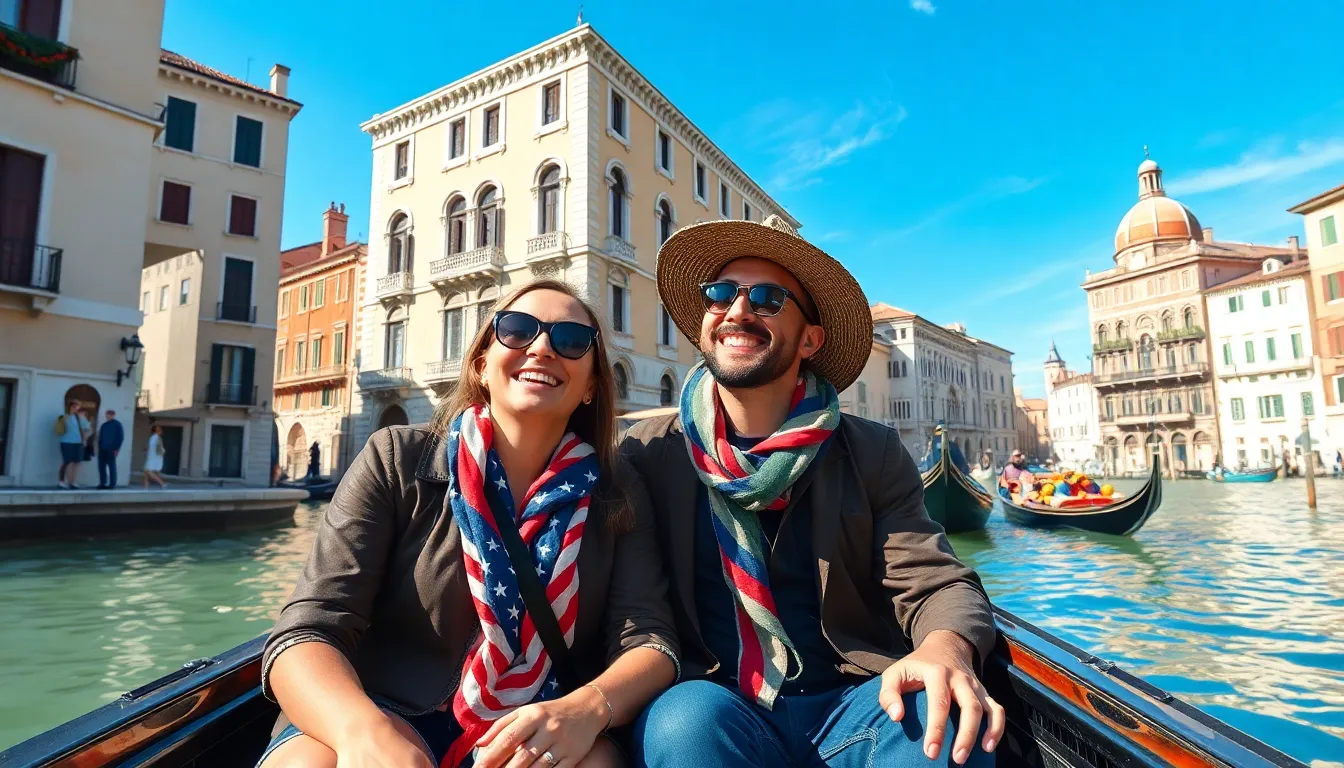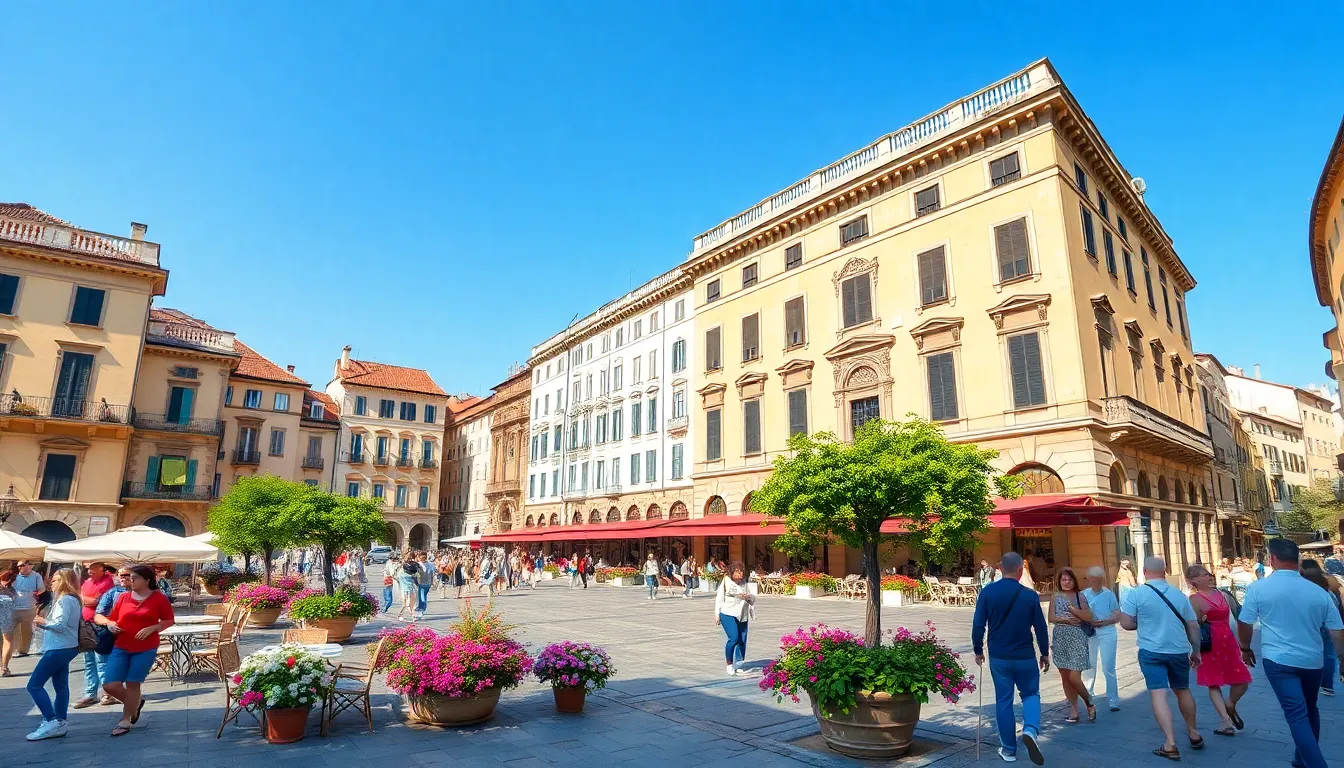Book Appointment Now

Italy Travel Tips: Your Ultimate Guide to Exploring Italy Like a Local
Italy—where every corner is a postcard and every meal is a love affair. From the romantic canals of Venice to the sun-soaked beaches of the Amalfi Coast, this boot-shaped paradise has something for everyone. But before he dives into a plate of pasta or she sips on that perfect espresso, travelers need a game plan.
Essential Italy Travel Tips
Choosing the right time to visit Italy enhances the experience. Spring and fall offer mild weather and fewer crowds. Download offline maps to navigate cities without internet access.
Respect local customs; greeting with “Buongiorno” is common in the morning. Dining etiquette matters; eat pasta with a fork, never a spoon.
Wear comfortable shoes; walking is the main way to explore cities. Book tickets in advance for popular attractions, like the Colosseum and Uffizi Gallery, to avoid long lines.
Stay hydrated; carrying a refillable water bottle is practical. Try to learn a few Italian phrases; locals appreciate effort, even with basic communication.
Transportation varies; trains connect major cities effectively, while buses serve smaller towns. Use public transport when possible, as parking can be challenging in urban areas.
Explore local markets for fresh produce and authentic souvenirs. Tasting regional specialties enhances cultural immersion; each region has its own culinary traditions.
Respect museum rules; silence is expected, and many locations prohibit flash photography.
Stay aware of pickpockets in crowded locations; keep valuables secure and within sight. Be mindful of the siesta, especially in smaller towns, as shops may close in the afternoon.
Planning Your Trip

Planning a trip to Italy requires careful consideration of timing and budgeting. Factors like weather and expenses can significantly impact the travel experience.
Best Time to Visit
Spring, specifically April to June, offers mild weather and beautiful blooms across the country. Fall provides similar conditions from September to October, with fewer tourists and vibrant foliage in many regions. Both seasons allow travelers to enjoy outdoor activities and local festivals. While summer attracts crowds and heat, winter presents the charm of festive markets and fewer visitors in major cities. Travelers should account for regional differences, as northern areas can be cooler than southern ones.
Budgeting for Italy
Budgeting effectively is crucial for an enjoyable Italian vacation. Accommodations vary widely from luxury hotels to budget hostels, impacting overall expenses. Dining can also range from affordable trattorias to high-end restaurants. Public transportation offers a cost-effective way to navigate cities, encouraging exploration without breaking the bank. Daily expenses typically average $100-$150, depending on individual preferences. Setting aside funds for entry fees to attractions enhances the travel experience. Planning for shopping and souvenirs is essential, as local markets offer unique finds.
Transportation Options
Traveling through Italy requires understanding the various transportation options available. Efficient mobility enhances the overall experience, allowing for seamless exploration of cities and regions.
Getting Around Cities
Public transportation serves as an effective way to navigate Italian cities. Buses and trams offer wide coverage and frequent schedules, making them convenient for daily commutes. Metro systems operate in major cities, including Rome and Milan, ensuring quick access to main attractions. Walking remains an excellent alternative, especially in historic centers where pedestrian-only zones exist. Taxis provide flexibility, though fares may vary by city and time of day. Ride-sharing services, such as Uber, are available in select areas, offering another convenient option for travelers.
Intercity Travel
Trains form the backbone of intercity travel across Italy. High-speed trains connect major cities, allowing journeys to be accomplished in a few hours, such as Rome to Florence in about 1.5 hours. Booking tickets in advance often results in significant savings. Regional trains extend coverage to smaller towns, providing access to hidden gems. Buses complement train services, serving routes not covered by rail, and they offer an economical alternative for budget-conscious travelers. Rental cars enable greater freedom, especially for those keen on exploring rural landscapes and remote areas.
Cultural Etiquette
Understanding cultural etiquette enhances travel experiences in Italy. Travelers gain respect and appreciation for local customs through small gestures.
Greetings and Manners
Greetings in Italy reflect warmth and friendliness. A firm handshake often initiates interactions. Familiarity dictates that close friends and family use cheek kisses—typically one on each cheek. Eye contact during conversation shows engagement and respect. It’s polite to address people with titles, such as “Signore” or “Signora,” followed by their last name. When meeting someone for the first time, being courteous leads to positive impressions. Italians value personal space, so remain aware of physical boundaries. Also, punctuality is appreciated, especially in business settings. Being mindful of these customs creates a welcoming atmosphere while showcasing respect for Italian culture.
Dining Etiquette
Dining in Italy involves a blend of tradition and formality. Guests often wait for the host to start the meal, highlighting the appreciation for shared experiences. Forks remain in the left hand and knives in the right while eating. Mixing courses typically doesn’t occur; several courses showcase the meal’s progression. Tipping is customary but modest—ranging from 5% to 10% of the bill. Italians typically enjoy drinks only with meals, as sipping beverages beforehand is less common. Sharing food-related stories enhances conversation, making dining a cultural exchange. Observing these dining practices strengthens connections and enriches the culinary journey in Italy.
Must-See Destinations
Italy boasts an array of destinations that capture its rich culture and history. Travelers can explore vibrant cities and charming towns, each with unique characteristics.
Top Cities to Visit
Rome stands as the capital, rich with ancient history, including the Colosseum and Vatican City. Florence dazzles visitors with Renaissance art, featuring Michelangelo’s David and the Uffizi Gallery. Venice captivates with its enchanting canals and iconic gondola rides. Milan, known as a fashion capital, offers landmarks like the Duomo and La Scala. Naples serves as the gateway to the Amalfi Coast, known for its stunning coastline and mouth-watering pizza. Each city offers a distinct experience showcasing Italy’s diversity.
Hidden Gems
Tuscany’s hill towns, like San Gimignano, feature medieval architecture and stunning countryside views. Matera, known for its ancient cave dwellings called Sassi, provides a unique historical perspective. The coastal village of Cinque Terre showcases colorful cliffside homes and breathtaking hiking trails. In Sicily, Taormina boasts ancient ruins alongside beautiful beaches. Urbino, a lesser-known gem, delights with its Renaissance palaces and rich artistic heritage. These hidden treasures enrich any Italian travel itinerary.
Conclusion
Traveling through Italy is an unforgettable experience filled with charm and culture. With the right preparation and knowledge of local customs, travelers can fully immerse themselves in the beauty of this remarkable country. Embracing the local way of life enhances every moment spent in cities and towns alike.
By planning ahead and being mindful of travel tips, visitors can navigate Italy’s diverse landscapes with ease. Whether indulging in culinary delights or exploring historic sites, each journey offers something unique. Ultimately, Italy’s allure lies in its ability to create lasting memories that resonate long after the trip ends.



